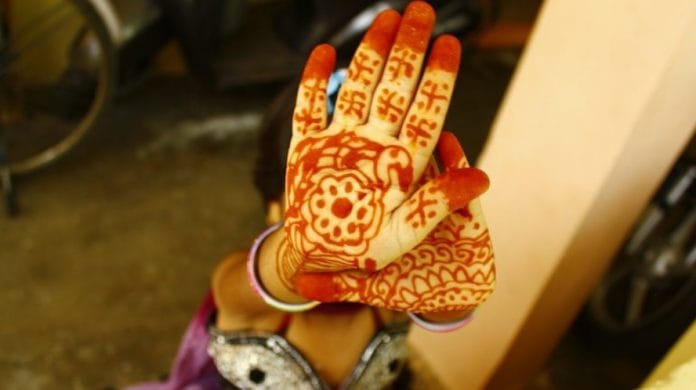Thank you dear subscribers, we are overwhelmed with your response.
Your Turn is a unique section from ThePrint featuring points of view from its subscribers. If you are a subscriber, have a point of view, please send it to us. If not, do subscribe here: https://theprint.in/subscribe/
Sometimes, the biggest transformations stem from the simplest changes. History is full of examples where an unintended consequence of a decision turned out to be its most powerful impact. Take, for instance, the argument from Freakonomics, where economists linked the legalization of abortion in the US to a dramatic decline in crime rates two decades later. The connection may not have been obvious at first, but it reshaped the way we understand social change. Now, a similar, seemingly minor change in India—the Rajasthan government mandating the inclusion of the date of birth on wedding cards—might turn out to be a defining moment in the battle against child marriage.
The Landscape of Child Marriage in India
Child marriage remains one of India’s most deeply entrenched social evils. While legal frameworks such as the Prohibition of Child Marriage Act (2006) exist, enforcement remains a challenge due to societal norms, lack of awareness, and poor monitoring. The practice, driven by poverty, gender inequality, and traditional customs, robs millions of young girls of their childhood, education, and health. Despite progress, UN data suggests that India still accounts for one-third of the world’s victims of child marriage.
Numerous initiatives have attempted to curb the practice—legal amendments, rescue operations, helplines, and awareness campaigns. However, given the deeply ingrained nature of child marriage, a drastic decline is a challenge. This is where a seemingly trivial administrative move—the requirement to print birth dates on wedding invitations—could bring about an unprecedented shift.
Why This Could Be a Game Changer
The mandatory inclusion of birth dates on wedding cards is a policy that could create ripples far beyond its intended scope. It may not seem like much, but this simple requirement could serve as an automatic deterrent for families trying to marry off their underage daughters.
Wedding cards are more than just an invitation; they are a public document. Once a girl’s age is clearly mentioned, scrutiny increases—from relatives, neighbors, and even vendors involved in the wedding preparations. Suddenly, child marriage, often carried out in secrecy, becomes harder to conceal. More importantly, it gives law enforcement and child rights activists an immediate tool to intervene before the marriage takes place. Naysayers may argue that it could be breaching the personal space of the bride and groom and a violation of their privacy. But in a world where children are pushed into a life of abuse and rape in the garb of marriage, maintaining the child’s age a secret should be hardly a concern. The society must be willing to pay this price if this centuries-old crime needs to end.
The Role of Faith Leaders: A Silent Revolution Waiting to Happen
Another crucial piece of the puzzle in eradicating child marriage is the role of religious and faith leaders. In India, marriages are largely solemnized by priests, clerics, and other religious figures who wield significant influence in their communities. If awareness programs focus on sensitizing them, they could become powerful allies in this fight.
Faith leaders are often the first point of contact in marriage ceremonies. If they are empowered to demand age verification before officiating weddings, they could single-handedly prevent countless child marriages. Their endorsement of the law not only ensures compliance but also shifts the social perception—what was once accepted as tradition could become unacceptable under their guidance.
So there is no doubt that the combination of a simple document change and the active participation of faith leaders could create a strong, self-sustaining mechanism to counter child marriage. Families that once saw child marriage as an unavoidable reality might now hesitate, knowing that a priest or a cleric could refuse to conduct the ceremony.
Small Steps, Big Impacts
The fight against child marriage has often been portrayed as an uphill battle requiring massive societal transformation. While that remains true, it’s also important to recognize that some of the most effective changes come in the form of small yet strategic interventions.
In Rajasthan, the government may not have envisioned that something as simple as mandating birth dates on invitations could strike at the heart of child marriage. But it can.
Similarly, involving faith leaders could introduce an entirely new dimension of deterrence. When trusted community figures take a stand against child marriage, people listen. Laws can punish, but cultural change happens when moral and spiritual authorities align with the cause.
Hope in the Smallest Details
The battle against child marriage is one of resilience, patience, and strategic action. Sometimes, it’s not the grand legal reforms but the subtle, almost unnoticed shifts that make the most profound impact. A simple date of birth on a wedding card. A priest refusing to solemnize an underage marriage. A neighbor questioning the legality of a wedding they were invited to.
These are the moments that create change. And sometimes, these moments are all it takes to shape a better future. The fight to end child marriage will not be won overnight. But with every small, carefully crafted intervention, we inch closer to a world where no child is robbed of their future. And that, perhaps, is the biggest change of all.
These pieces are being published as they have been received – they have not been edited/fact-checked by ThePrint.


